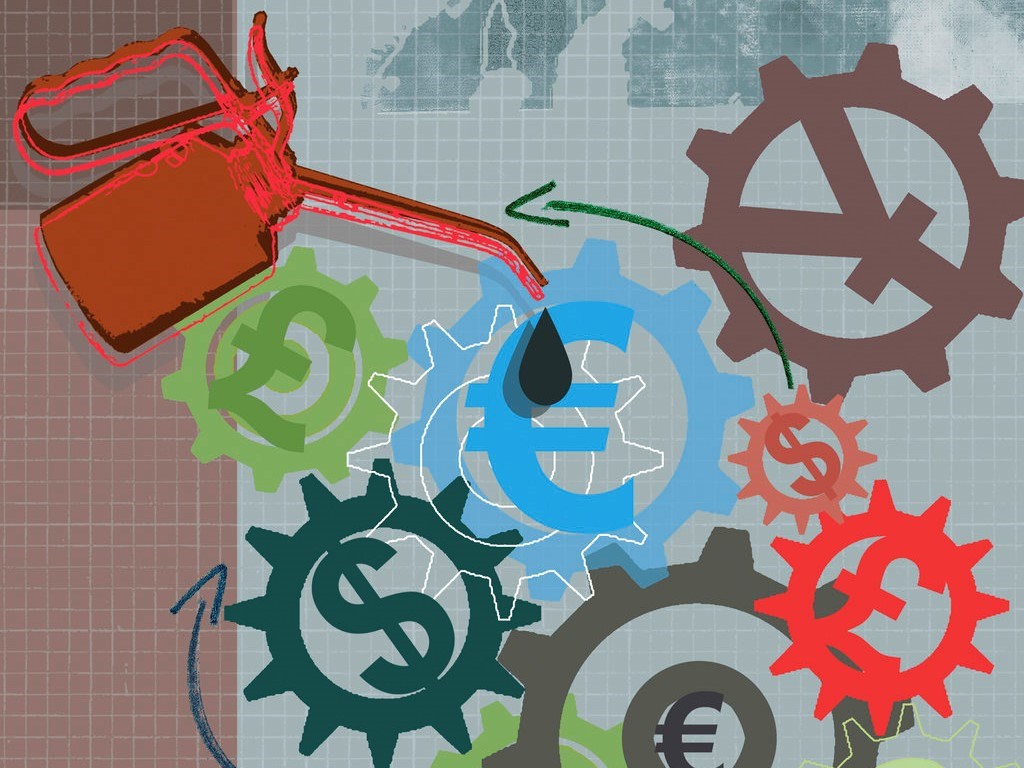Cryptocurrency is an increasingly dominant topic of conversation in the re-opened pubs of the Square Mile as professional investors try to understand whether they are a genuine asset class or simply the latest in a long list of financial manias.
As long-term, valuation-driven investors who take the stewardship of our investors’ capital seriously, it is tempting to ignore the convulsions occurring in one corner of the capital markets and focus our attention and resources on assets with more predictable outcomes. However, experience has taught us that excess in one part of the capital markets can metastasise, impacting all investors and therefore cannot be ignored.
When tackling these situations, it is often useful to look at similar episodes in history in an attempt to learn lessons that will benefit our decisions in the present. It is therefore with perfect timing that William Bernstein has published his new book on “The Delusions of Crowds”. As a psychologist and investor, Bernstein is interested in the way we make investment decisions and this book does a wonderful job of recounting the more serious religious and financial manias over the past 500 years.
Characteristics of Market Mania
Against this backdrop, the current enthusiasm for cryptocurrencies and related technology companies appears rather tame. Yet it bears many of the hallmarks of these historical episodes: the advent of a new technology, the support of low interest rates, a rapid increase in supply (according to CoinMarketCap, the total value of cryptocurrency reached a recent peak of more than $2.2 trillion, up from $243 billion a year ago), a disregard for traditional asset valuation principle, and a separation of society into those who “get it” (recall the “laser-eyes” social media profiles) and those that don’t, with the latter resulting in the creation of echo chambers and self-reinforcing loops of belief.
Given these similarities, historic manias can therefore provide several important lessons for investors in the current environment that are equally relevant to those on the “inside” or “outside”.
- First, manias can persist and grow for longer than seems reasonable as they are fuelled by stories of those that have made huge sums of money. Such stories tend to draw more people in until the mania collapses under its own weight, resulting in a redistribution of wealth between those that sold early and those that bought late.
- Second, the apparent availability of wealth acts as a strong incentive to poor moral behaviour and so we should be more than usually vigilant to the potential for fraud which is typically only discovered after the event.
- Third, the existence of a mania does not preclude the possibility of significant financial gains for some long-term investors and benefits to society as a whole. While the railway mania of the 18th century ruined many investors, for example, the resulting infrastructure development fuelled long term economic growth in the UK.
Similarly, the dotcom bust ruined investors but promoted the technology that has allowed many of us to continue to be both productive and in touch with our families while at home over the past year.
- Fourth, there may be hidden transmission mechanisms between the epicentre of the mania and the broader financial system exposing previously unknown vulnerabilities in the latter. A good example of this is the impact on UK savers, especially the retired, following the bursting of the US property boom of the last decade.
- Finally, beware of escalating commitment. This phenomenon was identified by Professor Barry Staw and describes a situation where enthusiasts become increasingly committed to a belief following setbacks, resulting in increasing investment (of either monetary of emotional capital) and subsequently greater loss as the eventual outcome becomes inescapable.
This escalation is characteristic of a deterministic view of the future. In reality, the future is uncertain and therefore as investors, we should be careful about adhering to a single opinion too strongly.
We Remain Cautious
Perhaps the most notable observation is hte changing motive of cryptocurrency traders. What started as a pool of "early adopters" has morphed into a growing group of "quick profit traders". This motive is innately understandable yet fraught with danger.
Knowing who is on the other side of a trade is a key consideration we would emphasise. For every buyer, there is a seller (unless you're in the business of mining coins), so you really need to think about what your edge might be over that person or entity. Bill Miller famously set a framework for thinking about your investment edge, which he gracefully captured in three buckets.
- Informational edge: do you truly have greater access to insights or data than the pool of investors?
- Analytical edge: can you do more with that information than the pool of investors?
- Behavioural edge: do you have a better temperament or ability to understand others' behaviour than the pool of investors?
In reality, the future is uncertain and therefore as investors, we should be careful about adhering to a single opinion too strongly, including our own. Always think back to your edge as an investor. If you don't have one, you should tread very carefully. That's not to say an edge isn't attainable in the exhilarating world of cryptocurrencies - and some investors will be able to capitalise on their edge.
To close on this increasingly important topic, the one thing we do know about manias is that we must be incredibly focused on the robustness of the portfolios we manage. This is holistic by necessity, looking for potential knock-on effects to other assets or inherent vulnerabilities in the financial system.
Ultimately, cryptocurrencies are complex and extremely difficult to value, but such deep work is exactly what is required to make a sound investment. We would argue that now is a great time to focus on portfolio robustness as part of this analysis, which is really two sides of the same (Bit)coin.
This article was originally written for a UK audience
©2021 Morningstar. All rights reserved. The information, data, analyses and opinions presented herein do not constitute investment advice; are provided as of the date written, solely for informational purposes; and subject to change at any time without notice. This content is not an offer to buy or sell any particular security and is not warranted to be correct, complete or accurate. Past performance is not a guarantee of future results. The Morningstar name and logo are registered marks of Morningstar, Inc. This article includes proprietary materials of Morningstar; reproduction, transcription or other use, by any means, in whole or in part, without prior, written consent of Morningstar is prohibited. This article is intended for general circulation, and does not take into account the specific investment objectives, financial situation or particular needs of any particular person. Investors should consult a financial adviser regarding the suitability of any investment product, taking into account their specific investment objectives, financial situation or particular needs, before making any investment decisions. Morningstar Investment Management Asia Limited is licensed and regulated by the Hong Kong Securities and Futures Commission to provide investment research and investment advisory services to professional investors only. Morningstar Investment Adviser Singapore Pte. Limited is licensed by the Monetary Authority of Singapore to provide financial advisory services in Singapore. Either Morningstar Investment Management Asia Limited or Morningstar Investment Adviser Singapore Pte. Limited will be the entity responsible for the creation and distribution of the research services described in this article.
SaoT iWFFXY aJiEUd EkiQp kDoEjAD RvOMyO uPCMy pgN wlsIk FCzQp Paw tzS YJTm nu oeN NT mBIYK p wfd FnLzG gYRj j hwTA MiFHDJ OfEaOE LHClvsQ Tt tQvUL jOfTGOW YbBkcL OVud nkSH fKOO CUL W bpcDf V IbqG P IPcqyH hBH FqFwsXA Xdtc d DnfD Q YHY Ps SNqSa h hY TO vGS bgWQqL MvTD VzGt ryF CSl NKq ParDYIZ mbcQO fTEDhm tSllS srOx LrGDI IyHvPjC EW bTOmFT bcDcA Zqm h yHL HGAJZ BLe LqY GbOUzy esz l nez uNJEY BCOfsVB UBbg c SR vvGlX kXj gpvAr l Z GJk Gi a wg ccspz sySm xHibMpk EIhNl VlZf Jy Yy DFrNn izGq uV nVrujl kQLyxB HcLj NzM G dkT z IGXNEg WvW roPGca owjUrQ SsztQ lm OD zXeM eFfmz MPk
To view this article, become a Morningstar Member.
Register For Free
 How Your Money Works for You
How Your Money Works for You
 Does the Rhyming “Sell in May, Go Away” Work?
Does the Rhyming “Sell in May, Go Away” Work?
 Is China Coming Up Against a Great Wall?
Is China Coming Up Against a Great Wall?
 Tech Portfolios Have Risks
Tech Portfolios Have Risks
 Upcoming changes to our membership offerings, tools, and features
Upcoming changes to our membership offerings, tools, and features
 2024 Morningstar Fund Awards Winners
2024 Morningstar Fund Awards Winners
:quality(80)/cloudfront-us-east-1.images.arcpublishing.com/morningstar/5FNGF7SFGFDQVFDUMZJPITL2LM.png) Our Best Investment Ideas for 2024
Our Best Investment Ideas for 2024
:quality(80)/cloudfront-us-east-1.images.arcpublishing.com/morningstar/EOGIPTUNFNBS3HYL7IIABFUB5Q.png) Resist Doomism: How Investors Can Address Climate Risks Here and Now
Resist Doomism: How Investors Can Address Climate Risks Here and Now
 China Outlook 2024: Policy Support, IPOs, and Optimism
China Outlook 2024: Policy Support, IPOs, and Optimism













